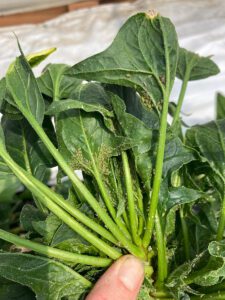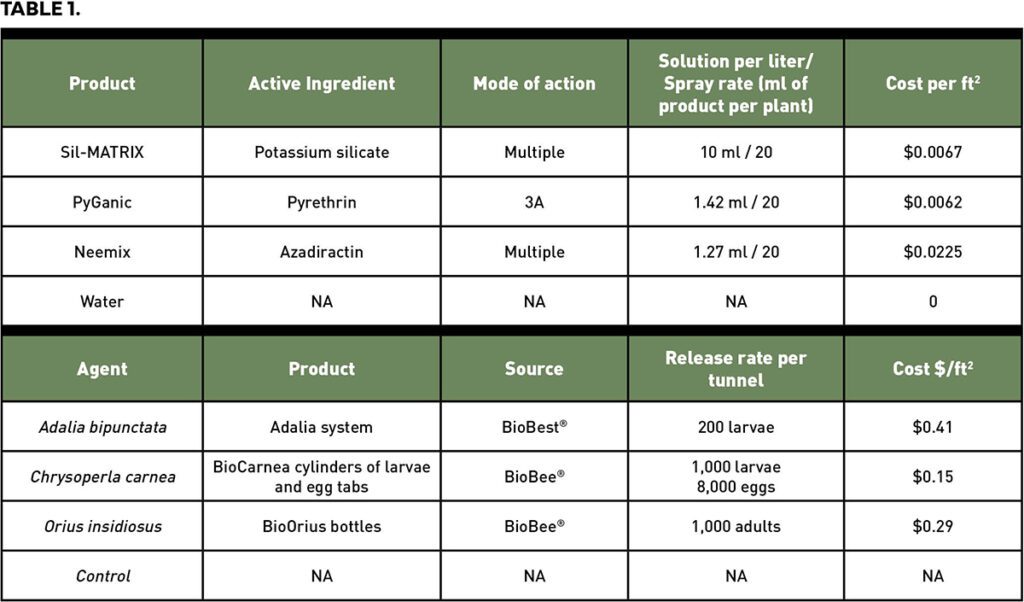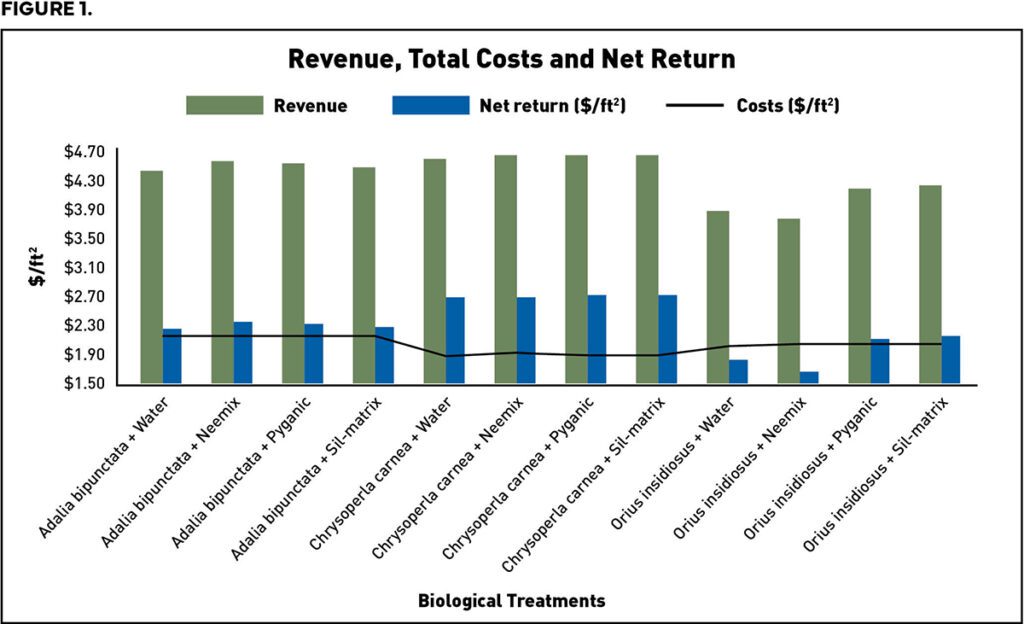Apr 18, 2024Veg Connections: Biopesticides and beneficial insects
High tunnels are an essential tool to maintain cold-tolerant crops such as spinach and other leafy greens during winter months. However, even in winter, tunnels can also provide a hospitable environment for pests to proliferate. Green peach aphids, foxglove aphids and potato aphids are cold-tolerant pests that are common on winter greens.
To prevent aphid outbreaks in high tunnels, management options are needed that are safe, effective during winter and economically viable. Economic viability indicators such as benefit-cost, break-even and profitability analyses allow farmers to compare cost-effective pest management strategies and identify the most profitable approach.

We conducted a study during the winter of 2022-23 at a Purdue Agricultural Research Farm to determine the best combination of biopesticide sprays and commercially available biological control agents for aphid management on high tunnel spinach. Sprays included PyGanic (Pyrethrin), Sil-MATRIX (Potassium silicate) and Neemix (Azadiractin).
Biocontrol agents included the two-spotted lady beetle/ladybug (Adalia bipunctata), green lacewing (Chrysoperla carnea) and minute pirate bug (Orius insidiosus). Two treatment applications were made during the season.
See Table 1 (Page 28) for rates. We also computed the profitability and economic loss analyses to assess the cost-efficiency of each treatment.


Economic viability of biopesticides, biocontrols Figure 1 reveals the revenue, cost and return of 12 biocontrol treatments for aphids on high tunnel spinach at our research farm. All analyses were conducted in dollars per-square-foot ($/ft²). To develop economic models relevant to commercial farms, we first estimated the cost of producing one pound of spinach per square foot on a small urban farm (1.5-acres, 30-plus vegetables produced under high tunnels).
The production cost was estimated at $1.56 per pound, which included seed, fertilizer and other variable and fixed costs. We then computed total costs by adding the cost of each of the 12 biocontrol treatments to the production cost (see Table 1). Revenue was calculated by multiplying the average yield (pound/ ft²) by the average price received by the farmer in 2022 ($10 per pound). Lastly, net returns were obtained by subtracting total costs (production and biocontrol costs) from the revenue.


The top three net returns were obtained from the combination of C. carnea and PyGanic, C. carnea and Sil-MATRIX, and C. carnea and Neemix at $2.71/ft². Figure 2 illustrates the economic loss of each treatment combination. The economic loss was determined by multiplying the yield loss due to infestation with aphids (per square foot) by the average price per pound of spinach. This analysis allows farmers to compare the potential economic loss of different biocontrol strategies in comparison to the control treatment.
The highest economic losses were incurred under the combination of O. insidiosus and Neemix ($1.06/ft²) and O. insidiosus and water ($0.91/ft²). On the other hand, the lowest economic losses were obtained from the combination of C. carnea and PyGanic, C. carnea and Sil-MATRIX, and C. carnea and Neemix, at $0.05/ft². Best aphid management practices
At our research farm, all biocontrol predators reduced the degree of aphid outbreak compared to the control (no treatment). Among them, C. carnea provided the best management and reduced aphids by 90%. Spray treatments provided short-term management (up to 3 weeks) of aphids in February, but sprays were less successful in April. The high performance of biocontrol agents following sprays, both in terms of aphid management and yield, indicates the compatibility of these tactics for a cost-effective integrated pest management program.
Samantha Willden, Jean Pierre Zavala, Ariana P.Torres and Laura Ingwell are all affiliated with Purdue University. Willden is a postdoctoral researcher in the Department of Entomology. Zavala is working on a master’s degree in the Department of Horticulture and Landscape Architecture. Torres is an associate professor in agricultural economics. Ingwell is an assistant professor in the Entomology Department.
While high tunnels allow crops such as spinach to survive the winter,Chrysoperla they also allow pests such as aphids to thrive.
Researchers tested 12 combinations of biopesticides and biocontrol predators to rate the effectiveness of aphid control.
John Pierre Zavala, a student pursuing a master’s degree at Purdue University, participated in the research.














